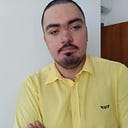His Dark Materials: a review
(Note: as the series hasn’t done airing in some places, do not read this because I’m not holding back on spoilers)
So, after three years since season one airing and Covid-related shenigans, the tv series adaptation of His Dark Materials has finally concluded. The books were a stapple of my childhood and I dare say were formative for the person I’d become, so overall I am extremely pleased with this adaptation. Then again, I was never too hostile to The Golden Compass, so eh.
Broadly, the series follows all the major story beats. Roger’s death. Lyra and Pan’s seperation. Mary’s temptation of Lyra. All of them, though there are some significant differences. For example, Balthamos does not accompany Will pretending to be his daemon, Carlo Boreal is given an expanded role, we see Will back in season 1 (thus making it an adaptation of both Northern Lights and The Silver Knife), several lines of dialogue are changed. The Mulefa segment is woefully cut short and essentially restricted to the final few episodes, which I assume to be due to budget reasons. Coulter does not imprison Lyra in the Himalayas but in an island in the German Ocean, presumably due to the geopolitical instability of Tibet.
I do like a few of these changes, most notably the expanded relationship between Coulter and her daemon and the apparence of the harpies and cliff-ghasts, but overall I do mourn the fact that a faithful adaptation of those moments may never come to be.
Aesthetically, I really dig the grittier look of the series. Whereas The Golden Compass interpreted Lyra’s world as bright and making abundant use of gold, the series uses muted colours for technology, from the gray Alethiometer to the makeshift military camp of Asriel’s republic to the station in the land of the dead. It is my opinion that His Dark Materials is as much sci-fi as it is fantasy, and this offers this a gross steampunk look. Normally I pretty prettier, brighter technology, but it contrasts wonderfully with the brighter settings, like the Kingdom of Heaven or the Mulefa’s world.
As I said, the story beats are mostly the same so almost everyone is in character. Lyra is a bit more subdued in her mischievousness which was a point of contention in reviews of the first season, but overall her arc still works, still shows the growth of a quick-witted little girl to a wiser adolescent. Coulter is given more dimmensions to her character, the sheer resentment of the oppressive nature of her world and self-hatred being brought forefront. Ogunwe is no longer a king with a cheetah daemon, but he is given a more complex personality as we see “The Temple” having done to his daughter what the GOBblers did to the children in Lyra’s world and having doubts about Lord Asriel. Some characters, such as Fra Pavel and Mary Malone, are also heavily implied to be LGBT, which is always nice.
While I do feel for the daemons and the Mulefa’s redesign, I do understand the budget constraints for these changes, so I resentfully accept them. Less understandble is changing Kaisa into a gyr falcon (it’s a fantasy series, and snow geese aren’t that goofy), the people of Cittàgazze being brittish rather than italian (it’s in the name) and Gomes’ daemon into a spider (makes clever use of the beetle drones but seems completely unnecessary). Still, these are not deal breakers for my enjoyment of the show.
Overall, despiste some pacing issues brought about by Covid in season three, I think all three seasons manage to translate the books to the screen, and all the major and most memorable scenes made it. It is, in the end, what I longed for, finally here.
I hope this ends up among the classics. And The Book of Dust reference at the end… well, may that be adapted too (hopefully with less rape).
